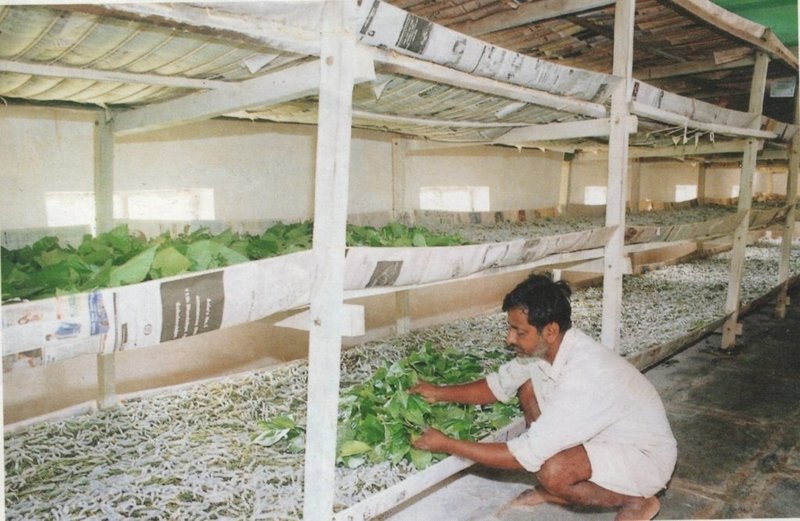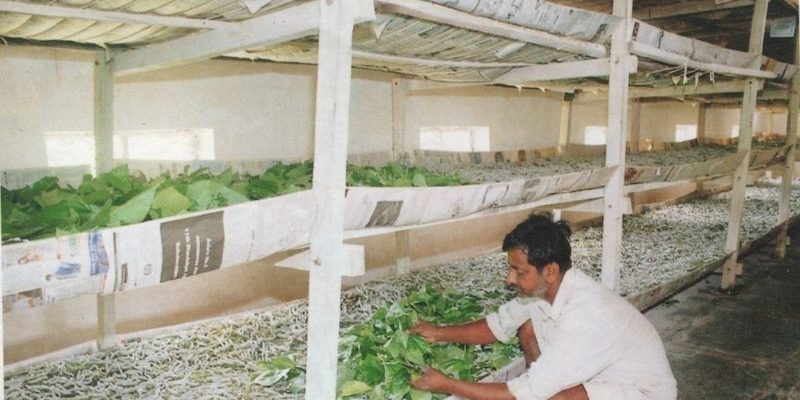
Housing silkworms at home isn’t just for scientists or hobbyists. You might be someone fascinated by insects, or perhaps you’re just looking for a unique pet. Whatever your reason, creating a cozy home for silkworms can be rewarding and fun. So, let’s dive into some DIY rearing tips to help you get started!
Choosing the Right Housing for Your Silkworms
When it comes to housing silkworms, the first thing you need is a suitable environment. Think of it like preparing a nursery for a baby. The right setup will keep them comfortable and healthy as they grow.
You can use containers like plastic bins or glass aquariums, but there are a couple of key points to keep in mind. Make sure the container is well-ventilated. Silkworms need fresh air to thrive, so small holes in the lid or sides can help. You’ll want to find a balance between keeping them safe from predators and allowing enough airflow to prevent moisture buildup.
Next, consider the size of the container. Silkworms grow fast and can get quite large! A good rule of thumb is to plan for about 1 square foot of space per 100 silkworms. It’s like making sure your pets have enough room to play and move around comfortably.
Decor and Setup
Your silkworms don’t need a lot of decor—remember, they thrive on simplicity. Adding soft bedding can help; shredded paper is a great option. It provides a comfy place for them while also absorbing any excess moisture. You might also consider adding a small dish for any leftover food, which can help keep the space clean.
Additionally, keep the temperature in mind. Silkworms prefer warmer environments, ideally around 70 to 80 degrees Fahrenheit. You can use a space heater or heat pad, but be careful: you don’t want it too hot. It’s all about creating that “just right” ambiance.
Feeding Your Silkworms: What They Eat
Silkworms are not picky eaters, but they do have specific dietary needs. The primary food for silkworms is **mulberry leaves**. If you have access to fresh mulberry trees, you’re in luck! They can munch on those leaves as much as they want, like kids at a buffet.
If mulberry leaves aren’t available, don’t worry. You can use commercial silkworm chow, which comes in the form of pellets or flakes. Just mix the chow with water to make a paste, and your silkworms will feast on that instead.
Here’s a quick tip: change their food regularly. Leftover food can spoil and lead to mold or bacteria, which is bad for your silkworms. Aim to check their food daily and replace it as needed. It’s a bit like making sure your pet has fresh dinner every night!
Feeding Schedule
Establishing a feeding schedule can help you stay on track. Think of it like your morning coffee routine—once you get into the groove, it becomes second nature. You might want to feed your silkworms three times a day, especially when they’re young. As they grow, you can adjust their meals to twice a day.
Keep an eye on their appetite, too. If they seem to be devouring their food, that’s a good sign! If they seem less interested, it could be a signal to adjust either the type of food or their environment. It’s all about listening to your little silk-making friends.
Maintaining a Healthy Environment
A big part of raising silkworms is keeping their habitat clean and tidy. The last thing you want is for bacteria or mold to show up uninvited. Honestly, regular maintenance can save you from a lot of headaches down the line.
Start by cleaning their housing once a week. Remove any leftover food, droppings, or decaying leaves. You can use a damp cloth to wipe down the sides of the container and replace the bedding. Just remember to do it gently; silkworms are delicate!
Humidity and temperature control is another aspect to consider. Use a hygrometer to monitor humidity levels, aiming for 60-70%. Too much moisture can lead to problems like mold growth, while too little can dry out your silkworms. It’s a bit like getting the right climate for your favorite tropical plant—you want to find that sweet spot.
Handling Silkworms
When it comes to handling, it’s essential to be gentle. Silkworms are quite delicate creatures. If you want to move them or inspect them closely, use a soft brush or your fingers carefully. Think of it as a stroll through a park—you want to be mindful and avoid any sudden movements that might startle them.
Handling them can also be a great learning experience. You can observe their unique features up close, like their tiny legs and the way they move. Just be sure to wash your hands before and after, as you’ll want to keep their environment as clean as possible.
Understanding the Life Cycle of Silkworms
One of the most fascinating aspects of raising silkworms is watching their life cycle unfold. They go through several stages: egg, larva, pupa, and adult moth. Each stage brings new surprises and learning opportunities.
Starting with the eggs, silkworms hatch into tiny larvae that are often no bigger than a grain of rice. As they grow, they shed their skin multiple times—a process known as molting. Watching them grow can feel like you’re part of something magical, like being a fairy godparent to these little creatures.
After the larval stage, they enter the pupal stage. At this point, they form cocoons around themselves, which is where they’ll become moths. If you’re interested in fiber arts, this is when you might consider harvesting silk. Just remember, you’ll want to do it before they hatch into moths, as the silk would be lost otherwise.
The Moth Stage
Once the silkworms turn into moths, their primary goal is reproduction. Interestingly, adult silkworms don’t eat at all; they live solely off the energy stored during their caterpillar stage. If you’re curious, you can let them mate, or you can observe their behaviors for a few days before deciding.
After mating, the females lay hundreds of eggs, and the cycle starts all over again. You’ll have a new batch of silkworms to care for before you know it! It’s like being part of a continuous circle of life—and that’s a beautiful thing.
Common Problems and Troubleshooting
Even with the best care, you might encounter some challenges. Here are a few common problems and how to address them:
1. **Mold Growth**: If you notice mold in your silkworm habitat, it’s usually a sign of excess moisture. Reduce humidity levels and clean the housing more frequently. You might also want to switch to drier bedding.
2. **Stunted Growth**: If your silkworms aren’t growing as they should, check their diet. Are they getting enough nutrition? Sometimes, switching to fresh food or ensuring they have access to enough food can do wonders.
3. **High Mortality Rate**: If silkworms are dying, consider the temperature and humidity levels. Too hot or too cold can stress them. Keeping a close eye on these factors can help maintain a healthy environment.
These might seem daunting, but troubleshooting is part of the journey. With patience and observation, you can usually figure out what’s going wrong.
Final Thoughts on Rearing Silkworms at Home
Raising silkworms at home can be a rewarding experience filled with lessons about life cycles, ecology, and responsibility. It’s a fun hobby that not only allows you to engage with nature but also produces silk—a magnificent product of their hard work.
So, whether you’re doing it for education, curiosity, or just for the joy of raising creatures, take your time. Enjoy the process, observe, and learn along the way. And remember, every mishap and achievement is a part of your unique journey in the world of silkworm rearing. Happy silkworm farming!

